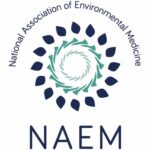Support Grows for Global Treaty Amendment to Ban Advertising, Display, Sales, and Offering of Sales of Mercury Skin Lighteners

Media Contacts:
Micaela E. Martinez, WE ACT for Environmental Justice, micaela.martinez@weact.org, +1-917-597-4282
Michael Bender, Zero Mercury Working Group, mercurypolicy@aol.com, +1-802-917-8222
Astrid Williams, Black Women for Wellness, astrid@bwwla.com
Erika Wilhelm, Campaign for Safe Cosmetics, Erika@bccp.org, +1-415-539-5005
Support grows for global treaty amendment to ban advertising, display, sales, and offering of sales of mercury skin lighteners
FOR IMMEDIATE RELEASE, NEW YORK – In early May, the African Region proposed an amendment to the Minamata Convention on Mercury to ban advertising, display, sale, and offering of sales of mercury-added cosmetics, including skin lightening products (SLPs), some of the most notoriously toxic cosmetic products sold. Advocates from across the U.S. applaud this proposal, which would also require Parties, like the U.S. Government, to set national objectives, coordinate interagency responses, and collaborate globally to curtail national sales and advertising of cosmetics containing mercury.
“We applaud the African Region for taking a leadership role in proposing an amendment to the global treaty on mercury in order to ban the advertising, display, sale, and offering of sale of skin lightening products that contain this harmful neurotoxin,” said Micaela E. Martinez, Ph.D., Director of Environmental Health, WE ACT for Environmental Justice. “The manufacture, distribution, and sale of toxic cosmetics is global threat to public health that requires coordinated international action.”
Mercury is added to SLPs because it lightens the skin by suppressing the production of melanin. It is harmful because it is a persistent neurotoxin that can cause severe adverse health effects.[1] When added to SLPs, mercury can enter the body via absorption through the skin, inhalation or orally.[2] Due to its ability to vaporize and spread within a home, mercury in cosmetic products is not only a danger to the user, but it may also poison other people in the home where the products are used. Infants, children, and the developing fetus are particularly vulnerable to the neurodevelopmental effects of mercury.[3] Long-term exposure may damage the eyes, lungs, kidneys, digestive, immune and nervous systems.[4]
Consistent with U.S. regulations, the Minamata Convention bans the manufacture, import, and export of cosmetics with mercury content above 1ppm. Despite current bans, however, mercury-added skin lighteners continue to be sold in the U.S., both in local markets/stores and on the internet. This is due in large part to the lack of a national sales ban and coordinated enforcement, particularly of illegal and toxic online sales by E-commerce giants like Amazon and eBay, and third-party vendors.
“Despite the Convention’s ban on manufacture and trade, online advertising and sales of illegal, high mercury cosmetics continues unabated, here and across the world,” said Michael T. Bender, International Co-coordinator of the Zero Mercury Working Group. “Consistent with its support for environmental justice reforms, the Biden Administration should endorse and co-sponsor this amendment.”
Advocates argue that mercury has no place in beauty products and that racist beauty standards are driving the use of toxic SLPs.
“There’s a really strong link between racism and the use of cosmetics, particularly skin-lightening creams,” said Yuwa Vosper, Policy & Regulatory Manager at WE ACT for Environmental Justice. “Much of this comes from colorism, with the deliberate targeting of harmful products to people of color to fulfill the socio-cultural influences and prioritization of Euro-centric beauty standards.
“A new 2022 New York State law prohibits the use of mercury as an ingredient in personal care products,” added Vosper. “And while state legislation such as New York’s will deter the use of mercury in skin lighteners made by major U.S.-based manufacturers, the influx of illegal products from overseas and via online retailers will still persist unless this amendment to the Minamata Convention is passed and strongly enforced.”
A global industry estimated to be worth $32.1 billion by 2024, skin lighteners and whiteners are most often marketed to people of color. Due to the lack of ingredients disclosure on the labels, users are often unaware of the toxic ingredients in SLPs and the harm they pose to their health. Advocates contend that it is not only just exposure to mercury itself, but the entire life cycle of mercury that adds to both the cumulative and disproportionate impacts on communities of color.
“Many EJ communities already face higher exposure to mercury and other toxic chemicals in the personal care products they use; Black women and girls are conditioned to adopt Eurocentric beauty standards that favor lighter skin tones leading to harmful beauty practices,” said Dr. Astrid Williams, Environmental Justice Program Manager with Black Women for Wellness. “While reducing other sources of mercury exposure are more often costly and complex to address, exposure from cosmetics is more straight forward to eliminate – simply by enacting and then effectively enforcing a national sales ban.”
“Mercury is a highly toxic substance that poses serious health risks to users, and can even cause death. We strongly support the amendment to the Minamata Convention on Mercury. Without global action, these products will continue to be illegally imported and sold in the US,” said Jamie McConnell, Deputy Director at Women’s Voices for the Earth.
“The proposed amendment to the Minamata Convention on Mercury banning the sale and advertising of mercury-containing skin lightening products is urgently needed,” said Janet Nudelman, Director of Breast Cancer Prevention Partners’ Campaign for Safe Cosmetics. “Mercury is one of the most toxic chemicals on the planet. The ongoing, illegal sale of these products is a travesty that is impacting women of color throughout the United States and globally, and it must stop.”
# # #
For more information:
[1] The Minamata Convention: (https://mercuryconvention.org/sites/default/files/2021-06/Minamata-Convention-booklet-Sep2019-EN.pdf) and the African Region’s proposed cosmetic amendment: (https://mercuryconvention.org/sites/default/files/documents/2023-04/EN_Africa_Amendment%20Proposal_Cosmetics_March_2023.pdf) will be considered at the fifth Conference of the Parties (COP5) in Geneva, Switzerland, 30 October 2023 – 03 November 2023 (https://mercuryconvention.org/en/meetings/cop5.)
[2] Numerous peer-reviewed studies confirm the negative impacts of mercury added SLPs on human health. Moreover, the World Health Organization has recognized that mercury is a “major public health concern,”(https://www.who.int/publications/i/item/9789240023567 and has outlined its concerns about SLPs in a fact sheet (https://www.who.int/publications/i/item/9789240023567)
[3] Zero Mercury Working Group testing indicates that hundreds if not thousands of toxic SLPs are available in the U.S. and global market, containing from 2-10% mercury by weight. ZMWG recently released a new report in February 2023, clearly showing continuing illegal sales of high mercury SLPs by Amazon.com (https://eeb.org/library/online-sales-of-illegal-high-mercury-skin-lightening-products/ and http://www.zeromercury.org/mercury-added-skin-lightening-creams-campaign)
[4] WE ACT for Environmental Justice has published a recent study on the use of SLPs in Northern Manhattan (https://www.liebertpub.com/doi/10.1089/env.2022.0053)
[5] The Beauty Inside Out Campaign, run by WE ACT for Environmental Justice, is a campaign against toxic chemicals in cosmetics marketed to people of color (https://www.weact.org/campaigns/beauty-inside-out/).
[6] The Campaign for Safe Cosmetics provides resources for transitioning to non-toxic beauty (https://www.safecosmetics.org/).
[1] Goeckermann WH (1922). Peculiar discoloration of skin: Probably Resulting From Mercurial Compounds (calomel) In Proprietary Face Creams. Journal of the American Medical Association 79, 605-607. doi:10.1001/jama.1922.02640080007002; Aberer W (1991). Topical mercury should be banned – dangerously outmoded, but still popular. Journal of the American Academy of Dermatology 24, 1550-151. https://doi.org/10.1016/S0190-9622(08)80057-6; Boyd AS, Seger D, Vannucci S, Langley M, Abraham JL & King LE (2000). Mercury exposure and cutaneous disease. Journal of the American Academy of Dermatology 43, 81-90. https://doi.org/10.1067/mjd.2000.106360.
[2] USFDA. Laws & Regulations – Prohibited & Restricted Ingredients. USFDA-Center for Food Safety and Applied Nutrition; 2015 [updated 1/26/2015. Available from: https://www.fda.gov/cosmetics/guidanceregulation/lawsregulations/ ucm127406.htm
[3] Mercury Poisoning Linked to Skin Products | FDA
[4] Mercury in skin lightening products. Chemical Safety and Health Unit, World Health Organization, 3 November 2019. Mercury in skin lightening products (who.int); Pollock S et al. (2021). The Dark Side of Skin Lightening: An International Collaboration and Review of a Public Health Issue Affecting Dermatology. Int’l J. Women’s Dermatology 158, 159; Chen Z, Myers R, Wei T, Bind E, Kassim P, Wang G, Ji Y, Hong X, Caruso D, Bartell T, Gong Y, Strickland P, Navas-Acien A, Guallar E & Wang X (2014). Placental transfer and concentrations of cadmium, mercury, lead, and selenium in mothers, newborns, and young children. Journal of Exposure Science & Environmental Epidemiology, 24(5), 537–544. https://doi.org/10.1038/jes.2014.26; Dickenson CA, Woodruff TJ, Stotland NE, Dobraca D & Das R. (2013). Elevated mercury levels in pregnant woman linked to skin cream from Mexico. American Journal of Obstetrics and Gynecology, 209(2), e4–e5. https://doi.org/10.1016/j.ajog.2013.05.030




